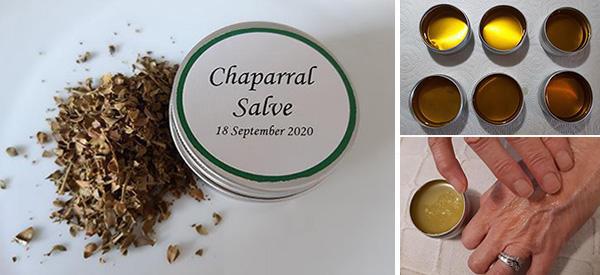
How to Make a Chaparral Salve for Wounds And Skin Infections
Chaparral (Larrea tridentata), also known as Greasewood or Creosote Bush, is native to desert areas of North America and Mexico.
The medicinal properties of this plant have now been more widely recognized, and the dried flowers and leaves can be purchased from herbal and health shops instore or online. While fresh material can result in more fragrant preparations, the dried product is just as effective.
What is Chaparral Used For?
This plant has both internal and external applications.
- Internal: Chaparral can be used in either a tincture or tea form.
- External: It is a popular salve or ointment.

When used correctly, and in the appropriate form, preparations from this plant have been used because of the following properties:
- Antibacterial / anti-microbial
- Anti-viral
- Anti-fungal
- Anti-inflammatory
- Anti-tumor
- Anti-parasitic
- Boosts liver function
- Improves digestion
- Improves the health of hair, skin, and nails.
That’s an impressive range of benefits and applications from a modest plant.
Chaparral’s Use for Wounds And Skin Infections
Several of these valuable properties, notably anti-microbial, anti-viral, anti-fungal, and anti-inflammatory, make a salve made from chaparral particularly helpful in healing a host of skin problems including:
- Scrapes / abrasions
- Cuts
- Minor burns
- Skin infections
- Fungal skin conditions
- Infections in minor wounds.
It is these benefits for the skin are our focus and reason for looking at recipes for a salve made from this useful and potent plant.
How to Make Chaparral Salve
A salve or ointment made from this fragrant plant is ideal for the application for a range of skin conditions. Further good news is how easy it is to make in your own home!
Ingredients:
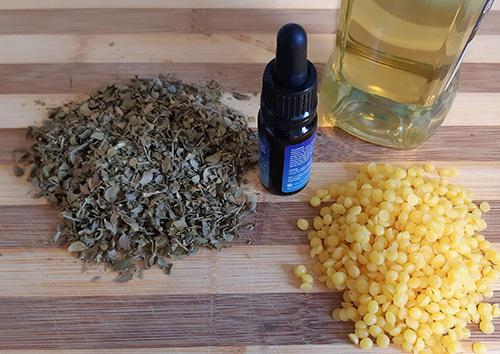
- 1 ½ cup of good quality plant-based oil
- 1 cup dry chaparral leaves
- ¼ cup beeswax pellets
- Essential oil (optional for added fragrance).
Method
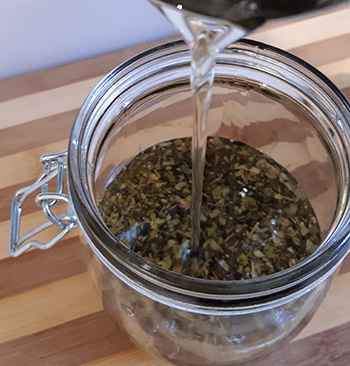
1. Infuse the oil:
- Place the chaparral in a mason or other glass jar
- Pour the oil over the leaves
- Leave to infuse:
Option 1:
Put a lid and label on the jar
- Cover the jar with a brown paper bag
- Place the jar in a place where it will get sun
- Leave the infusion for 6 to 10 weeks
- Shake the jar every couple of days.
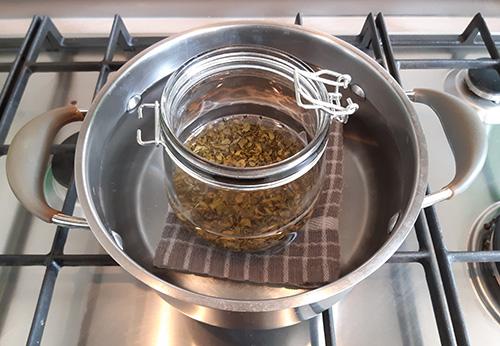
Option 2:
- Place the jar into a small pot
- Add water to the pot so the level is 2 inches / 5 centimeters from the top of the jar
- Put the stove on low and leave for 2 to 3 hours and check it regularly so the oil does not overheat.
If you have a crockpot, you could place the jar in it, add water so the level is 2 inches / 5 centimeters from the top of the jar, set to “Warm”, and leave for 8 hours or overnight instead of using a pot.
- Strain the oil through cheesecloth, kitchen muslin, or a fine-mesh sieve.

2. Melt the beeswax pellets:
- Place the infused oil in a double boiler or a jar or small stainless-steel bowl
- Add the beeswax pellets to the oil
- Place the jar inside a pot in a few inches of water or the bowl on top of a pot
- Heat the water slowly over an extremely low heat
- Stir or swirl the mixture until the pellets have all melted.
- Remove the mixture from the heat and allow it to rest for a few seconds.
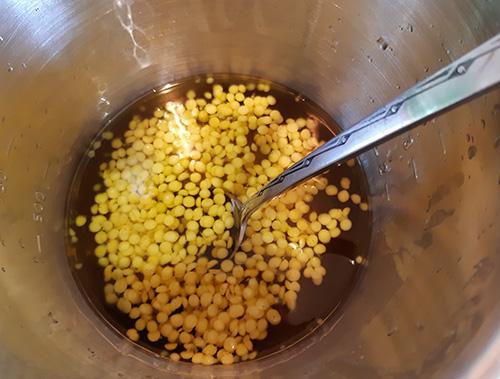
3. Gently and carefully pour the hot mixture into suitable jars or tins. We recommend 2 ounce or 50-gram aluminum cosmetic tins, or 4 ounces or 100-gram amber, glass apothecary jars.
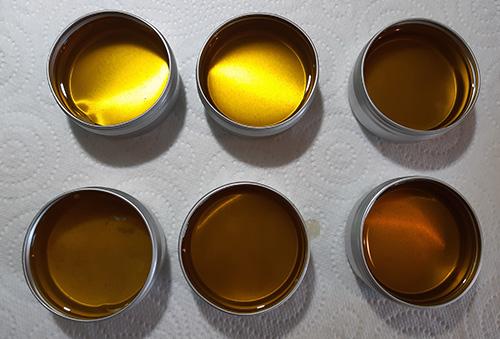
4. Place the lids onto the tin or jar.
5. Leave the salve to set or harden for several hours. Do not move the tins or jars during this period.
6. Label the salve by stating the name and the date you made it.
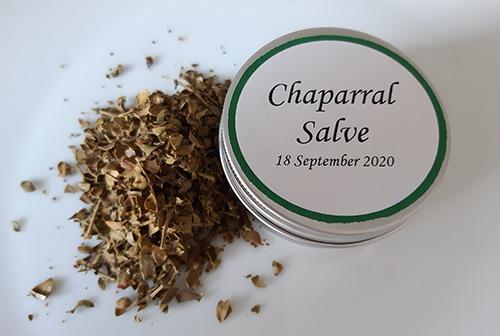
Using Chaparral Salve
- Dry skin, fungal problems, and rashes: rub the salve into the affected skin until it has been absorbed.
- Small cuts and wounds: carefully apply a layer of salve to the affected area and use plaster to prevent the salve from rubbing off.
- Minor burns: gently apply a good layer of salve over the burn and cover it if necessary. Do not use this preparation on a recent burn as the oil may seal in the heat which will allow damage to continue or more severe burn.
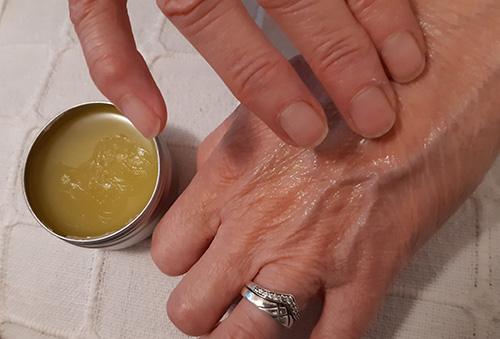
You can apply the salve up to three times a day.
How Do I Store Chaparral Salve and What is The Shelf-life?
A home-made salve like this should last and remain effective for up to 6 months. It may even have a shelf-life of up to a year if you store it in the fridge.
Don’t place the salve where it will get hot as this will damage the consistency.
Words of Caution
Although there are concerns over the internal use of chaparral or creosote bush, the salve is generally very safe to use. However, there are two cautions to keep in mind:
- Don’t use this salve on babies and children under one year old
- Some individuals may experience an allergic reaction and develop a rash or itch.
If you are worried about using the salve, or any new product, check with your health and well-being professional to ensure that it is safe for you and your family.
You may also like:
 DIY Cracked Hands and Feet Salve
DIY Cracked Hands and Feet Salve
How to Make a Year-Round Self-Sustaining Greenhouse No Matter Where you Live in America (Video)
Natural DIY Neosporin Salve Recipe
3 Home Remedies for Skin Fungus That Actually Work
How to Make Black Drawing Salve for Boils, Wounds and Tick Bites

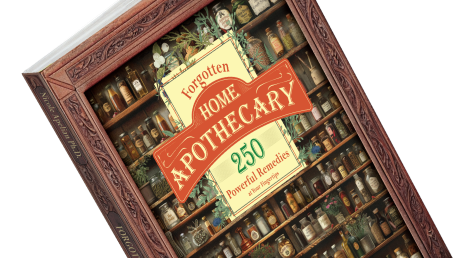






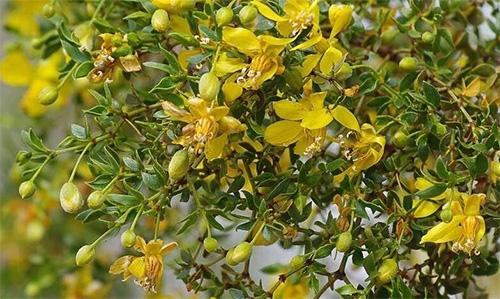
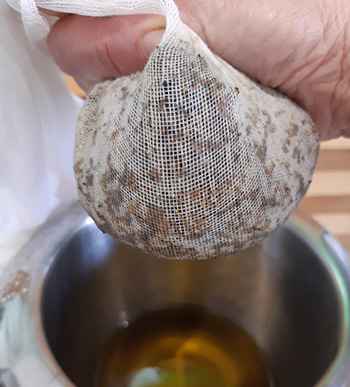
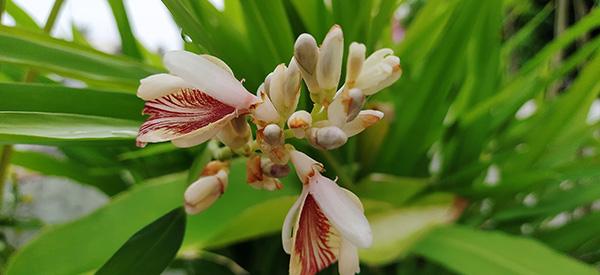
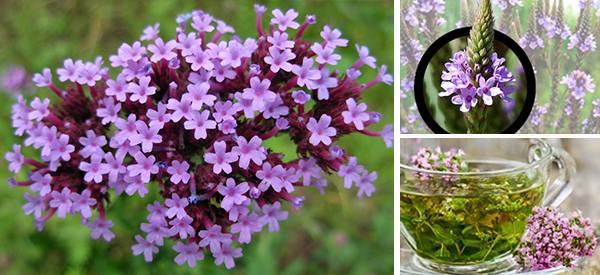
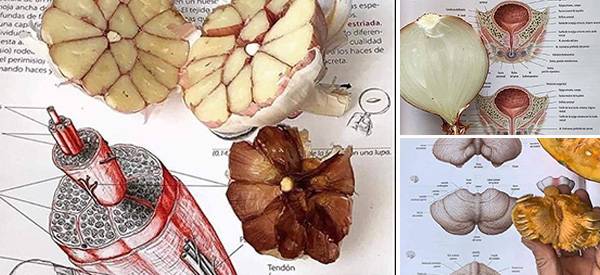
Hi Nicole!
What do you know about making pine needle tea? Just curious. I heard that such a tea can be a very effective antiviral which is very pertinate in current times.
Thanks, Steve Doe
BTW, I very much enjoy your emails
I used to use a chaparral product from Olympia Labs called Herp-Eeze that was an anti-viral. I had a small brain tumor at that time right where I held my wireless phone. Herp-eeze, vitamin D3 and eventually Reishi mushrooms toward the end helped get rid of it. I took the anti-viral product for about 6 months internally. Some of the toxicity of chaparral is taken out at Olympia Labs but eventually, my urine got dark and I had to stop taking the product. I was not supposed to take it for long periods of time.
I never got one bit of help from doctors. They refused to even look at it with an MRI or X-Ray. I felt it rub on the inside of my skull bone. It was horrible and it almost killed me. The Herp-Eese product helped me get rid of it because many brain tumors happen when a virus crosses the blood brain barrier. Reishi mushroom will not remove large amounts of tumor cells and should be used after the surgeon cuts out or debulks the tumor. That way, the Reishi mushrooms can clean up the few cells that the surgeon misses. My tumor felt like the size of a dime. We have to take care of ourselves because my doctor gave me zero help.